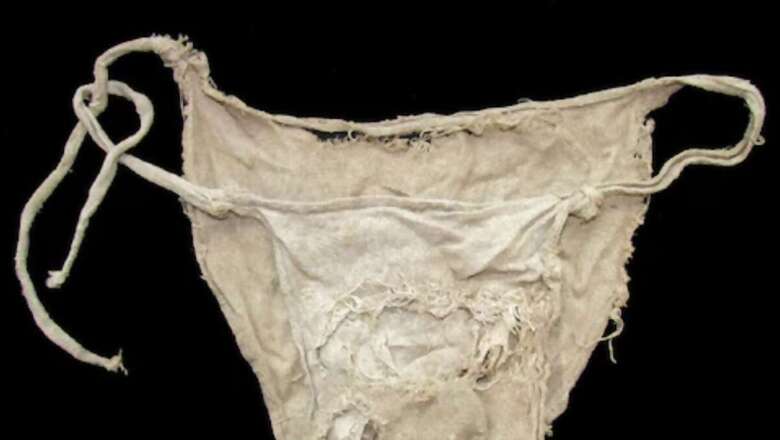
views
If you are looking at the underwear in the accompanying picture, you should know that from ancient to medieval times, people all over the world wore similar triangular underwear made from jute and cotton threads. This changed over time with the advent of modern underwear and undergarments.
The picture above shows a man’s underwear from ancient times, found in Lengberg Castle in North Tyrol, Austria. It is believed to date back to the early 15th century and was hand-made.
People from ancient Egypt wore a loincloth, while the Romans used a subligaculum. Later, during the medieval period, the codpiece was introduced in Europe.
The earliest form of underwear was the loincloth, worn globally in ancient times by both men and women. It consisted of strips of cloth passed between the legs and tied around the waist. In ancient India, a garment called ‘langot’ was worn. Ancient Egyptians made triangular-shaped clothes of linen with strings at the ends.
Interestingly, King Tutankhamun of Egypt was buried with 145 loincloths, indicating that kings must have had extensive collections. The ancient garments found in his tomb included 100 sandals, 12 tunics, 28 gloves, 25 head coverings, four stockings, and 145 triangular-shaped loincloths made of woven linen, worn by both men and women in Egypt at that time.
According to textile historians, the weave of a typical Egyptian linen loincloth had 37 to 60 threads per inch, while King Tut’s underwear had 200 threads per inch, giving it a silk-like softness. This is the only known case of a king being buried with so many loincloths.
The ancient Romans had their own undergarments worn under tunics, togas, or cloaks. This tradition dates back to the middle of the second century, showing that the history of undergarments is older than commonly understood.
During the Middle Ages, Celts and Germanic tribes wore baggy undershorts called braies, held up by belts or strings. By the 15th century in Europe, these undergarments were replaced by larger codpieces, designed not only to cover but also to protect men’s genitals. Codpieces, initially made of steel and attached to armor for battlefield protection, became larger and more decorative to signify masculinity. Interestingly, what began as a device of decency later became associated with obscenity. The term “codpiece” comes from the Old English “cod,” meaning “scrotum.”
The earliest known form of underwear was found in ancient Egypt, with loincloths dating back to 4,400 BC. These garments were usually made of linen. During the Middle Ages, men wore garments similar to boxer shorts, while women’s undergarments were more complex, often including corsets and multiple layers.
In the early 19th century, pantaloons became a practical part of any outfit for both men and women, worn under outer garments to keep them clean by absorbing dirt and sweat. This led to the development of more modern underwear and bra designs. With the introduction of bicycles, boxer-like clothing gained popularity for riding.
In 1928, Arthur Niebler was hired by the Cooper Underwear Company, where as a garment engineer he designed underwear briefs in the style of a jockstrap. In 1935, Niebler’s Jockey shorts became an instant hit.
Underwear like breeches became popular in India in the 19th century, but by the 1950s and 1960s, it became more comfortable and better suited as an undergarment, with advancements in colors and fabrics.













Comments
0 comment